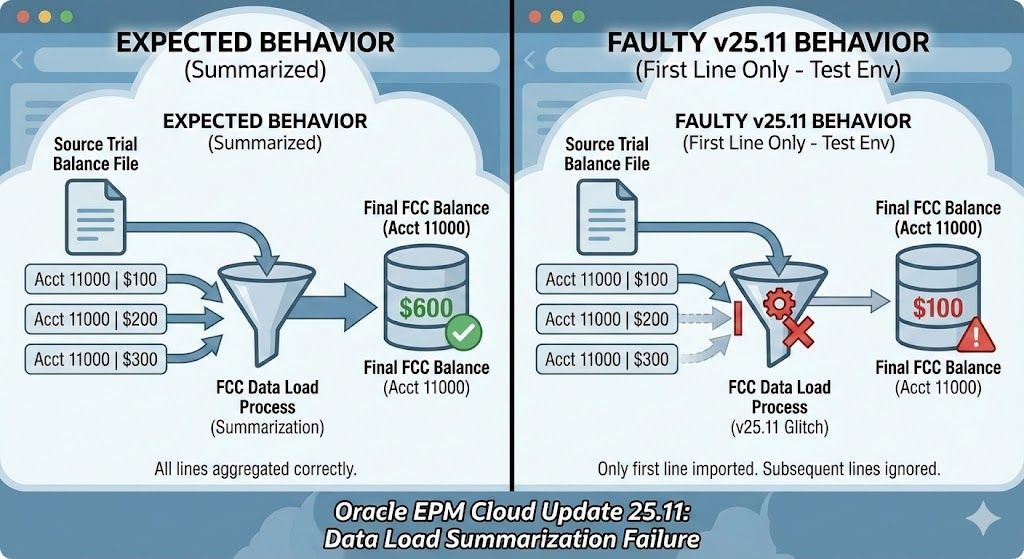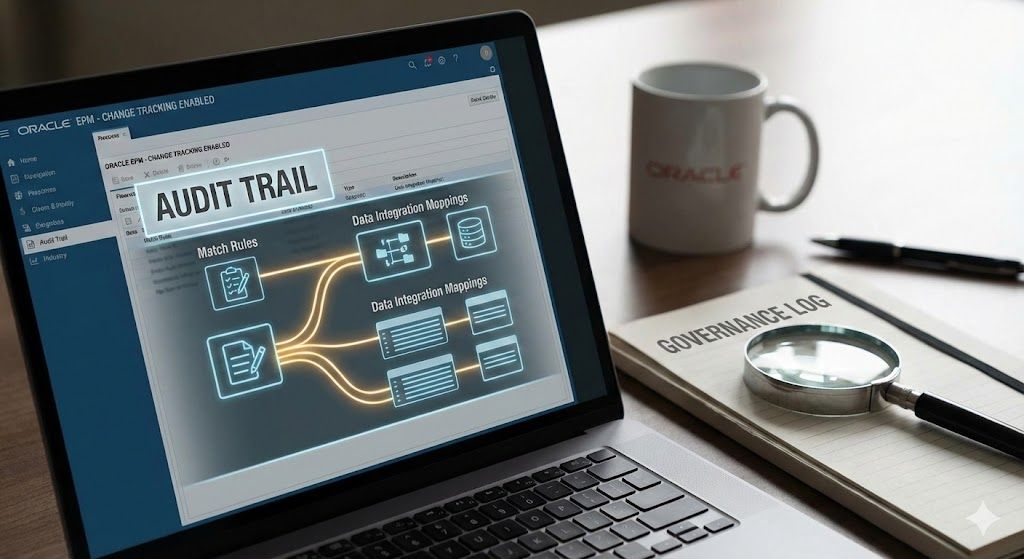Experto en Oracle Tax Reporting (TRCS)
Estamos excepcionalmente bien equipados para guiarlo a través de la implementación de Oracle TRCS.
Nuestra trayectoria comprobada incluye la entrega de una solución Oracle TRCS de alto impacto para un banco regional de EE. UU., donde automatizamos cálculos de impuestos complejos en 15 entidades y 18 estados.
Nos destacamos en la creación de reglas de automatización de impuestos para agilizar las conciliaciones de cuentas tributarias, incluida la utilización efectiva de los formularios de impuestos a pagar actuales.
Nuestra experiencia garantiza un proceso de implementación fluido y eficiente, adaptado a sus necesidades específicas y requisitos de cumplimiento.
Lo que ofrecemos
Gracias a nuestra amplia experiencia, brindamos a nuestros clientes orientación experta y soporte práctico para implementar y aprovechar estratégicamente Oracle Tax Reporting Cloud Service (TRCS) para optimizar procesos financieros.
Con más de dos décadas de amplia experiencia en NIIF y PCGA de EE. UU., garantizamos que sus procesos de declaración de impuestos no solo cumplan plenamente con las normas, sino que también alcancen la máxima eficiencia y precisión. Además, nuestro conocimiento especializado en precios de transferencia operativos nos permite integrar a la perfección sus estrategias de precios de transferencia en su solución Oracle TRCS.
Nuestros servicios integrales incluyen una integración fluida de sistemas, un diseño de flujo de trabajo personalizado para cumplir con todos los requisitos regulatorios, capacitación exhaustiva para su equipo y el desarrollo de herramientas de informes útiles. Nuestro enfoque holístico ofrece un sólido marco de informes fiscales adaptado a las necesidades específicas de su negocio y a las normas internacionales de contabilidad, mejorando la eficiencia, la precisión y el control.
Experto en tecnología fiscal
PCGA de EE. UU. y NIIF
Experiencia en jurisdicción local
Historial comprobado
¿Cómo trabajamos?
Ofrecemos a nuestros clientes de Oracle TRCS un conjunto integral de servicios diseñados para optimizar sus procesos de declaración de impuestos. Esto incluye:
- Implementación y configuración: Gestionamos todo el proceso de implementación, adaptando Oracle TRCS a sus necesidades comerciales específicas y garantizando una integración perfecta con los sistemas existentes.
- Automatización de Cálculos Tributarios: Nuestra experiencia nos permite automatizar cálculos tributarios complejos en múltiples entidades y jurisdicciones, reduciendo significativamente el esfuerzo manual y mejorando la precisión. Aprovechamos nuestra experiencia, por ejemplo, en la automatización de cálculos en 15 entidades y 18 estados para un banco regional estadounidense.
- Conciliación optimizada: Creamos reglas eficientes de automatización de impuestos para agilizar las conciliaciones de las cuentas tributarias, incluido el uso efectivo de los formularios de impuestos a pagar actuales.
- Informes y análisis personalizados: desarrollamos informes y paneles personalizados que brindan una visibilidad clara de sus datos fiscales, lo que permite una toma de decisiones informada y un mejor cumplimiento.
- Capacitación y soporte: Brindamos capacitación integral y soporte continuo a su equipo, garantizando que sean competentes en el uso de Oracle TRCS en todo su potencial.
- Optimización continua: Ofrecemos soporte y recomendaciones continuas para garantizar que su implementación de Oracle TRCS evolucione con sus necesidades comerciales cambiantes y requisitos regulatorios.
Nuestro objetivo es empoderar a su organización con una solución Oracle TRCS sólida y eficiente que simplifique los informes fiscales, reduzca el riesgo y mejore el rendimiento financiero general.







